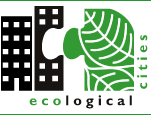Towards More Humane Cities and Metro Areas
By Dr. Rutherford H. Platt
Professor of Geography
Department of Geosciences
University of Massachusetts - Amherst
April 3, 2007
The six decades since the end of World War II have spanned a period of great change in the size, distribution, ethnicity, and habitability of urban places and regions in the United States and other developed countries. In 1950, "metropolitan areas" designated by the Census Bureau contained about 84 million people or 55 percent of the U.S. poulation. By 2000, metro areas had tripled to 226 million inhabitants, or four-fifths of the nation's total population. Successive waves of peripheral land development have been characterized by ever lower average population densities, and thus greater consumption of land per capita for urban purposes. While the negative implications of rampant urban growth have been widely deplored, efforts to curb the outward expansion of metropolitan areas have been largely futile. In the decades ahead, the emphasis must shift from limiting "urban sprawl," to making the existing cities and suburbs more green, healthy, safe, efficient, inclusive, and people-friendly -- in short, as humane as humanly possible.
The Ecological Cities Project, which began at UMass Amherst in 2000, has conducted research, teaching, and outreach on how urban communities across the nation and elsewhere are pursuing a common vision of a more Humane Metropolis. Urban regreening efforts are often scattered, uneven, and underfunded. But like ecological organisms, they thrive on diversity - of goals, of means, of participants, of disciplines, and (one hopes) of viewpoints.
Some are closely related to larger national movements, e.g., social and environmental justice, affordable housing, physical fitness, public health, natural disaster mitigation, endangered species protection, and environmentalism. They depend on spontaneous and often voluntary local leadership. They are pragmatic and creative in stitching together existing program resources, available funding, and donations of money, time, and office space. Most involve public-private partnerships, some of which are local alliances to save a particular site, to restore a stream, wetland, or watershed, or to pursue a particular mission, e.g. environmental education or urban gardening. Others have evolved into influential regional networks such as "Chicago Wilderness." Many also foster social interaction among diverse populations sharing a common resource like a local watershed, thus promoting "ecological citizenship."
The Humane Metropolis: People and Nature in the 21st-Century City surveys a broad spectrum of key issues, strategies, and programs that are contributing in large and small ways to the realization of more humane neighborhoods, cities, and metropolitan regions. The book consists of sixteen essays authored or co-authored by twenty-seven researchers and practitioners from across the United States.
|

